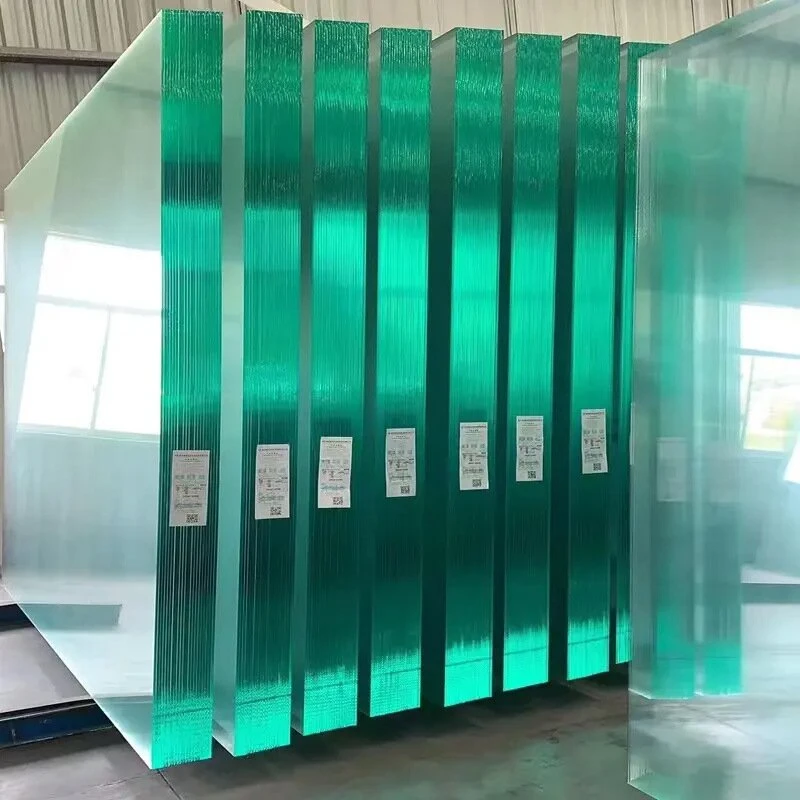The Rise and Importance of Toughened Glass
Toughened glass, also known as tempered glass, has emerged as a pivotal material in various industries due to its exceptional strength and safety features. As modern architecture and design evolve, toughened glass is becoming a go-to choice for builders, architects, and consumers alike. Understanding its properties, manufacturing process, and diverse applications can provide valuable insights into its growing significance in today's world.
What is Toughened Glass?
Toughened glass is produced through a process of extreme heating and rapid cooling, which makes it considerably stronger than ordinary glass. During the manufacturing process, the glass is heated to high temperatures, typically between 600 to 620 degrees Celsius, and then rapidly cooled using air jets. This thermal treatment changes the internal structure of the glass, increasing its strength and making it less prone to breakage. In case it does break, toughened glass shatters into small, blunt pieces, significantly reducing the risk of injury compared to traditional glass, which can create sharp shards.
Advantages of Toughened Glass
The advantages of toughened glass are manifold. First and foremost, its strength allows it to withstand impact, which is why it is increasingly used in buildings where safety is paramount. It can endure high levels of stress and thermal fluctuations, making it ideal for external environments. Additionally, toughened glass is resistant to thermal stress, which means it can be used in applications where sudden changes in temperature are commonplace, such as in shower doors, glass facades, and even glass staircases.
Another significant benefit is the aesthetic appeal of toughened glass
. Its clarity and transparency open up spaces, allowing for natural light to flow in, enhancing the overall ambiance of any environment. This feature has led to its widespread adoption in modern architecture, where expansive glass surfaces are a hallmark of contemporary design.
toughened glass
Applications of Toughened Glass
The applications of toughened glass are diverse and continually expanding. In residential settings, it is commonly used for windows, patio doors, and balustrades, providing both safety and elegance. In commercial spaces, toughened glass is utilized for storefronts, office partitions, and conference rooms, giving businesses a sleek and professional appearance.
Additionally, the automotive industry relies on toughened glass for side and rear windows, ensuring both safety and visibility for drivers and passengers. In the electronics sector, tougher glass is used for screens of smartphones and tablets, protecting devices from everyday wear and tear.
Future Trends
The future of toughened glass appears promising, particularly with advancements in technology and materials science. Innovations in production processes may lead to even stronger and lighter forms of toughened glass, increasing its applicability across various fields, including renewable energy sectors such as solar panels and building-integrated photovoltaics (BIPV). Furthermore, as sustainability takes center stage in modern construction, toughened glass’s recyclability will likely become an essential factor in its usage.
Conclusion
In conclusion, toughened glass stands as a testament to innovation in material science and engineering. Its unique properties not only enhance safety and durability but also contribute to aesthetic and functional design in residential, commercial, and industrial applications. As we move forward, the continued evolution of toughened glass will undoubtedly shape the future of architecture, transportation, and technology, making it an indispensable component of modern life.
 Afrikaans
Afrikaans  Albanian
Albanian  Amharic
Amharic  Arabic
Arabic  Armenian
Armenian  Azerbaijani
Azerbaijani  Basque
Basque  Belarusian
Belarusian  Bengali
Bengali  Bosnian
Bosnian  Bulgarian
Bulgarian  Catalan
Catalan  Cebuano
Cebuano  Corsican
Corsican  Croatian
Croatian  Czech
Czech  Danish
Danish  Dutch
Dutch  English
English  Esperanto
Esperanto  Estonian
Estonian  Finnish
Finnish  French
French  Frisian
Frisian  Galician
Galician  Georgian
Georgian  German
German  Greek
Greek  Gujarati
Gujarati  Haitian Creole
Haitian Creole  hausa
hausa  hawaiian
hawaiian  Hebrew
Hebrew  Hindi
Hindi  Miao
Miao  Hungarian
Hungarian  Icelandic
Icelandic  igbo
igbo  Indonesian
Indonesian  irish
irish  Italian
Italian  Japanese
Japanese  Javanese
Javanese  Kannada
Kannada  kazakh
kazakh  Khmer
Khmer  Rwandese
Rwandese  Korean
Korean  Kurdish
Kurdish  Kyrgyz
Kyrgyz  Lao
Lao  Latin
Latin  Latvian
Latvian  Lithuanian
Lithuanian  Luxembourgish
Luxembourgish  Macedonian
Macedonian  Malgashi
Malgashi  Malay
Malay  Malayalam
Malayalam  Maltese
Maltese  Maori
Maori  Marathi
Marathi  Mongolian
Mongolian  Myanmar
Myanmar  Nepali
Nepali  Norwegian
Norwegian  Norwegian
Norwegian  Occitan
Occitan  Pashto
Pashto  Persian
Persian  Polish
Polish  Portuguese
Portuguese  Punjabi
Punjabi  Romanian
Romanian  Russian
Russian  Samoan
Samoan  Scottish Gaelic
Scottish Gaelic  Serbian
Serbian  Sesotho
Sesotho  Shona
Shona  Sindhi
Sindhi  Sinhala
Sinhala  Slovak
Slovak  Slovenian
Slovenian  Somali
Somali  Spanish
Spanish  Sundanese
Sundanese  Swahili
Swahili  Swedish
Swedish  Tagalog
Tagalog  Tajik
Tajik  Tamil
Tamil  Tatar
Tatar  Telugu
Telugu  Thai
Thai  Turkish
Turkish  Turkmen
Turkmen  Ukrainian
Ukrainian  Urdu
Urdu  Uighur
Uighur  Uzbek
Uzbek  Vietnamese
Vietnamese  Welsh
Welsh  Bantu
Bantu  Yiddish
Yiddish  Yoruba
Yoruba  Zulu
Zulu 

